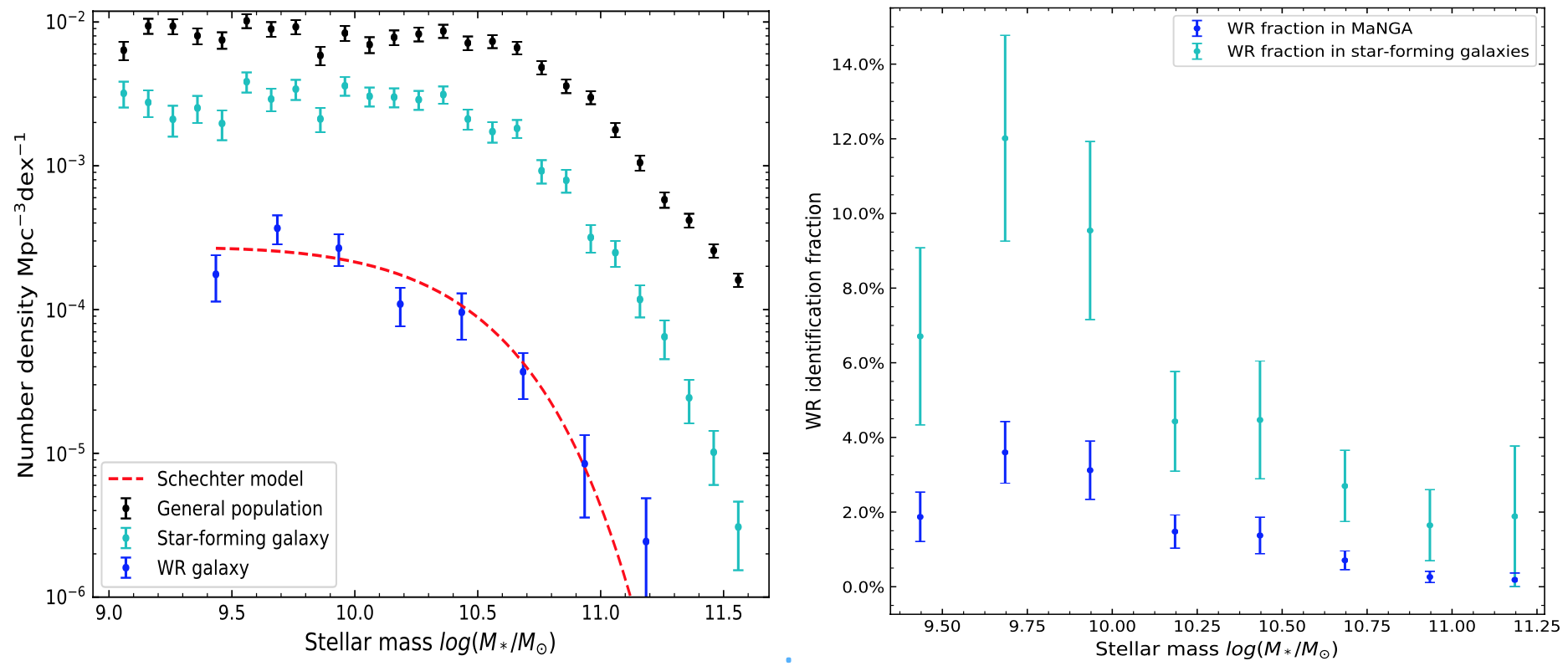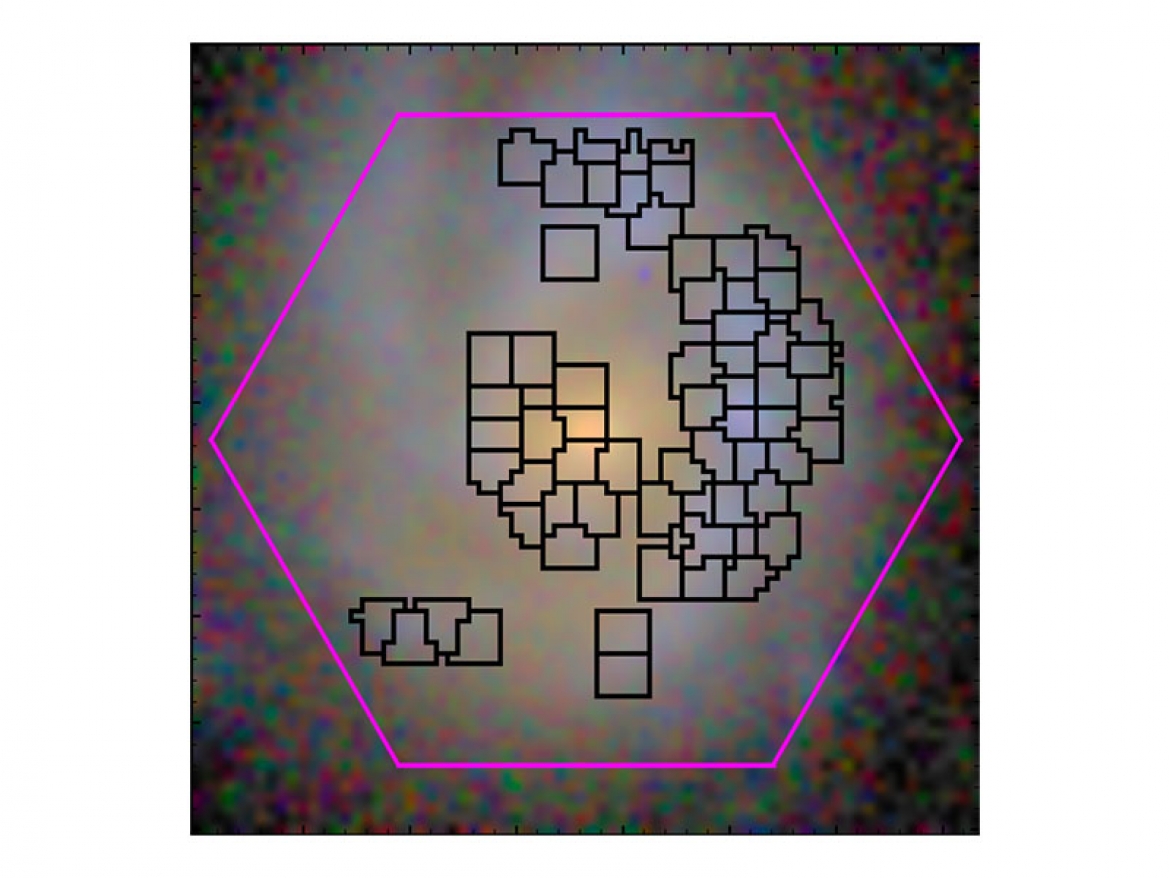Searching for Wolf-Rayet Regions of Massive Stars in Galaxies
Wolf-Rayet (WR) galaxies are a rare population of galaxies that host living high-mass stars during their WR phase (called WR stars). These galaxies can be used to study a variety of important astrophysical questions including constraints on the stellar initial mass function, stellar evolution models, the relation between supernovae and gamma-ray bursts, etc. The first WR galaxy was identified in 1976 and a total of about 130 WR galaxies had been reported by the end of last century. Thanks to the SDSS I & II survey of nearby galaxies (targeting galaxy centers), many more WR galaxies were found, but the number was still limited to a few hundred [1]. Integral field spectroscopy (IFS) surveys have become available recently and provides a more efficient way of identifying WR galaxies, as WR stars are expected to be more preferentially found in discs than central regions that earlier phases of the SDSS probed.
Mr. Fu-Heng Liang, Prof. Cheng Li, Mr. Niu Li from the Department of Astronomy at Tsinghua University, in collaboration with Prof. Renbin Yan from the University of Kentucky has performed a thorough search for WR galaxies using IFS data from the ongoing SDSS-IV/MaNGA survey [2]. They look for signatures of WR stars which manifest themselves as broad stellar emission lines of helium, nitrogen and carbon in the spectrum of star-forming regions in the galaxies. To efficiently identify this intrinsically weak WR feature, they have carefully identified all regions of ionized Hydrogen gas (HII regions), and analyzed each region through spectral stacking, full spectral fitting, and visual examination. This thorough search has led to a WR catalog consisting of 267 WR regions distributed in 90 WR galaxies, based on the current sample of MaNGA which includes a total of 4621 galaxies. Figure 1 displays the optical image, Hα surface brightness map and spectral features for one example WR region.
They investigated basic properties of WR galaxies in this catalog including stellar mass, color, star formation rate, structure and morphology. They estimated, for the first time, the stellar mass function of WR galaxies, and compared it with the general galaxy population in the local Universe, as shown in Figure 2. The detection rate of WR galaxies is typically about 2.0%, with weak dependence on stellar mass. This detection rate is 40 times higher than previous studies based on SDSS single fiber data [1], thanks to both the outskirts coverage of the IFS data and the higher signal-to-noise ratio of the MaNGA spectra. The team is extending their research, by using this WR catalog to constrain the stellar Initial Mass Function as well as to explore spatially resolved properties of individual WR regions.


References:
[1] Wei Zhang, et al., 2007, https://ui.adsabs.harvard.edu/abs/2007ApJ...655..851Z/abstract
[2] Fu-Heng Liang et al., 2020, submitted for publication in ApJ, https://arxiv.org/abs/2001.00431



